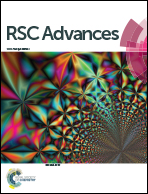Excellent capacitive deionization performance of meso-carbon microbeads†
Abstract
Capacitive deionization (CDI), which is based on the formation of electric double layers on the surface of electrode materials at low power supply, is one of the most promising technologies for efficient ion removal from brackish water or seawater. In this paper, meso-carbon microbeads (MCMB), which have an ultrahigh surface area and rich functional groups, exhibited excellent double layer performance with specific capacity of 300 F g−1. In a batch-mode configuration, symmetrical MCMB electrodes reached the maximum electrosorption capacity of 17.7 mg g−1 at 1.5 V in 25 ml of 5 mM NaCl aqueous solution. Furthermore, the electrosorption capacity of MCMB is two times larger than that of commercially used activated carbon.


 Please wait while we load your content...
Please wait while we load your content...